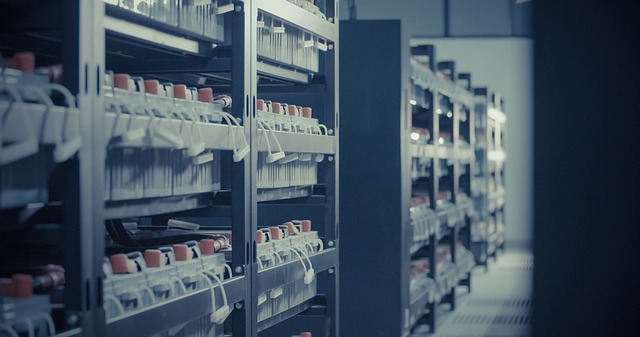Lithium Battery Low Voltage Protection- Introduction and Reasons
Feb 25, 2020 Pageview:863
Lithium batteries have multiple chemical properties, and during their regular use, the internal chemical reaction that converts chemical energy to electrical energy is usually done under specific conditions like overcharging over-discharging, and overcurrent. This catalyzes chemical side reactions that adversely affect the performance and lifespan of the lithium battery and may end up causing internal pressure to increase rapidly thus generating large amounts of gas and ultimately, the battery explodes. For this reason, all lithium batteries need protection and the protection circuits are used to monitor the charging effectively and discharging states of the cells.
How do you protect your lithium battery with low voltage?
The following are a few measures you can take to protect your battery with low voltage:
1.Always keep your batteries at room temperature
Extreme temperatures can adversely affect and damage your lithium batteries. When the cells are subjected to very high temperatures, they tend to overheat and thus, go through a process known as thermal runaway which causes the chemical compounds within the cells to react and this might make the battery explode and burst into flames.
Also, shallow temperatures tend to damage the battery in many ways such as by making it leak its very corrosive contents. Room temperature ranges between 20 and 25 degrees Celsius. Heat can be one of the most dangerous threats for a battery with low temperature so never leave the cells in your car or any other hot area.
2.Avoid frequent full discharges
Unlike other battery types, lithium batteries lack a charge memory, and this means that they do not require full discharge cycles. It is recommended to only subject lithium batteries to partial discharges instead. There is however, an exception to this rule as battery experts advise the users that after 30 charge cycles, it would help if they allowed their lithium battery to discharge fully.
If one submits to partially discharging their batteries all through, they, the cells, are likely to fall into a condition known as digital memory which alters the accuracy of the device’s power gauge. You are, therefore, advised to let the battery discharge to its cut-off voltage point and then recharge it back to full capacity to recalibrate the power gauge.
3.Avoid completely discharging the cells
When you drain your lithium batteries below 2.5V per cell, the safety protection circuit installed in the battery tends to open, and this makes the battery seem dead. When your battery gets to this stage, you won’t be able to use its original charger to get it back to normal functioning. For such a task, you may need the help of a battery analyzer that has a boosting function to bring it back to life. It is, therefore, advisable never to fully drain your lithium batteries entirely or recharge a deeply discharged cells that have been left dormant for extended periods due to safety reasons.
4.Proper storage
If your lithium battery is already at a very low voltage or cut-off point, you should never store it in that state. This is because, like most other battery types, lithium batteries tend to self-discharge when left dormant, and if you store them in very low voltages, it may damage the cells. Self-discharge is capable of lowering the voltage of a cell even further below the cut-off voltage, and once this occurs, your battery may undergo various chemical reactions within its cell and therefore, degrade much faster than expected.
How does a lithium battery protection circuit work?
When your lithium battery has low voltage, leaving it in that discharged state puts it at a higher risk of remaining entirely discharged. In such a state, the current that flows to the protection circuitry also tends to discharge the cells. If your battery also happens to get discharged beyond the standard cut-off point, its performance will significantly reduce as will its lifespan and eventually, it will cease to function entirely. However, if you were to set the lockout voltage of the cells to a very high point, the battery might not be capable f meeting its maximum capacity.
The low battery mode is usually enabled in lithium-ion cell products, like smartphones, thus, allowing them to power off, and at this point, even if the cell isn’t receiving charge for a while, the protection circuit won’t have taken too much voltage from it. This prevents the battery from being drained excessively and damaged in the end. Protection circuits regularly use currents that are below 4.5A. At such low current, the time taken for a lithium-ion battery to arrive at the end of discharge voltage increases significantly. For other protection circuits that use high current, the time of self-discharge is quicker. And if the lithium battery gets self-discharged lower than the cut-off voltage, you might not be able to recover the capacity.
When the lockout voltage is at 3.0V, the protection circuit is usually designed for a lithium-ion battery which is single-celled.
Why do you need lithium battery low voltage protection?
Lithium batteries and especially rechargeable ones need protection, and its properties determine this reason. During the manufacture of lithium batteries, manufacturers always install a protection circuit board to monitor the state and functioning f the cell and especially during malfunctioning incidences. These events might be like overcharging, over-discharging, short-circuiting, overheating during charge cycles and even overcurrent. The protection circuit board usually completes the protection function of lithium batteries and is composed of electronic circuits.
The circuits monitor the voltage of the battery’s core while the charge/discharge circuits are closely monitored at -40 ° C to +85 ° C to prevent damaging the battery.
Final words
Lithium batteries, just like any other battery type, are susceptible to various malfunctions and adverse conditions that may degrade the cells, especially if they have a low voltage. It is therefore, necessary for one to ensure that their battery has a protection circuit built in them to provide cover against low voltage which could damage the cells entirely.
- Prev Article: Lithium Iron Phosphate Rechargeable Battery-Charging and Safety
- Next Article: Lithium Ion Battery Recycling Process and Methods
Leave Message
Hottest Categories
-
Hottest Industry News
-
Latest Industry News












